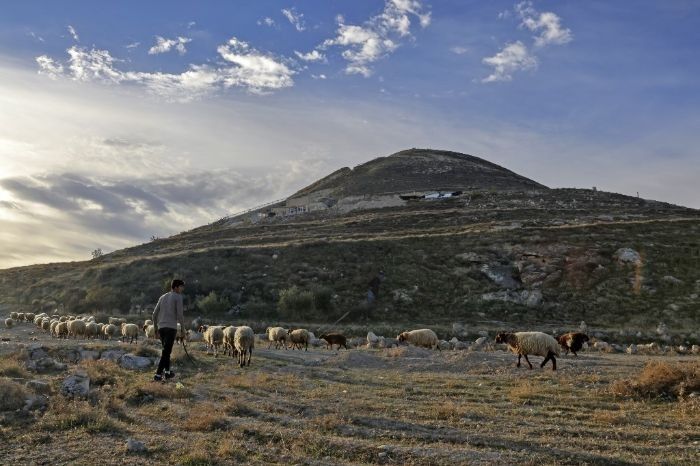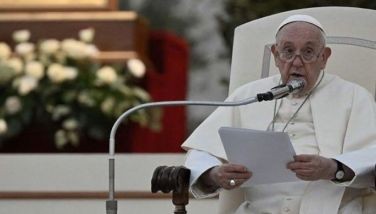Israel unveils parts of Herod's palace buried by Judean king

HERODIUM, Palestinian Territories — Israeli authorities are set to unveil previously off-limits structures within King Herod's palace-fortress Herodium, which the tyrannical Roman-era leader interred as his enormous burial plot.
Herodium, a hugely popular tourism destination, is near Bethlehem in the occupied West Bank but falls in an area where Israel exercises full military and civilian control.
Archaeologists say Herod decided towards the end of his life to bury his palace, using ground from below the hill it was perched upon, until the outline of the structure was no longer visible.
Israel's Nature and Parks Authority plans to open the revamped site on Sunday, allowing visitors to see for the first time Herodium's arched stairway, foyer and private theatre.
The Judean desert complex was built by the Roman-appointed king known both for his brutality and the magnificent structures built during his reign over Judea from 37 to 4 BC.
The hilltop palace, its main entrance facing Jerusalem, was Herod's favourite.
It was the only one he named after himself and where he chose to be buried, said Roi Porat, the Hebrew University archaeologist in charge of the excavations.
A mere burial plot, however, would not have satisfied Herod, who wanted his final place of rest to overshadow his palace.
"That's why he covered the mountain, including the palace, to emphasise it," said Eran Kruzel of the Israel Nature and Parks Authority.
'Unparallelled'
And while burying the palace during his lifetime provided Herod with the satisfaction of knowing his grave would stand out, it also helped preserve and protect the site for 2,000 years.
"This is an unparalleled archaeological laboratory," Porat said, comparing it to Pompeii's preservation in lava.
A broad staircase leads up the graveside to the palace's main foyer.
There are three tiers of support arches above the foyer, from when Herod decided to bury his palace but still needed access while he was still alive.
The foyer itself contains striped frescos in their original auburn, green and black, creating patterns mimicking marble panels, in line with the Judean royal style.
At the bottom of the stairs on the other side of the grave is the theatre with around 300 seats, and the private booth and royal visiting room overlooking it.
Herod hosted Marcus Agrippa, the second-in-command to Caesar Augustus, in that room in 15 BC, according to Porat.
"This was an extremely important visit for Herod," Porat noted, with the Judean ruler redecorating the visiting room to include a series of drawings mimicking open windows and depicting Agrippa's conquest of Egypt, with bold and lavish stucco reliefs above.
"Prior to this, Herod followed Jewish tradition that avoided images of animals and people, but here, anything was possible," Porat said.
"It's truly a Roman capsule in Judea."
The excavation and preservation of the latest parts of the palace began some 13 years ago with the discovery of Herod's grave.
To Porat, the site illustrates Herod's mindset, "when all he's concerned with is how to preserve his memory to eternity."
"His name has been preserved here," Porat said.
"For the better or for the worse, the landscape here in this region south of Jerusalem has been changed."
- Latest
- Trending


























